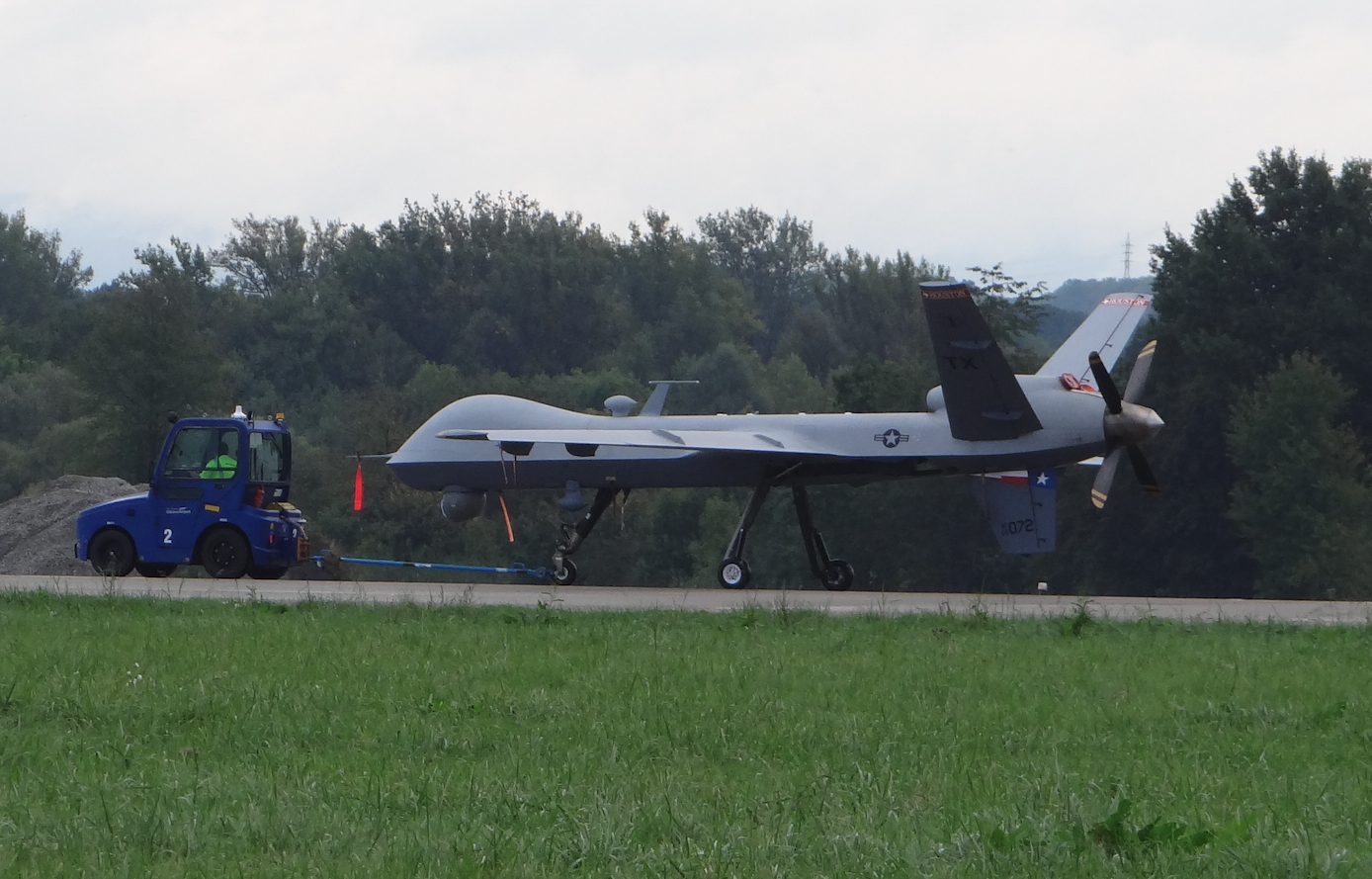Kraków 2022-09-17
General Atomics MQ-9 Reaper.
General Atomics MQ-9 Reaper is an American combat unmanned aerial vehicle designed for long-haul flights at high altitude.
The MQ-9 Reaper aircraft made its first flight on February 2, 2001. It was commissioned on May 1, 2007. The MQ-9 Reaper is a development version of the General Atomics MQ-1 Predator. The General Atomics MQ-9 Reaper is sometimes referred to as the Predator B. The apparatus is capable of performing controlled or autonomous tasks. The MQ-9 Reaper is the first hunter-killer unmanned aerial vehicle designed for long-term surveillance at high altitudes.
The MQ-9 Reaper is a larger, heavier and more efficient unmanned aerial vehicle than the General Atomics MQ-1 Predator predecessor. The MQ-9 Reaper has a 950 hp (712 kW) turboprop engine, compared to the MQ-1 Predator piston engine, which produces 115 hp (86 kW). The greater engine power allows you to carry 15 times more weapons and move at twice the speed of the MQ-1. The camera is monitored and controlled by the crew at the Ground Control Station (GCS), including the use of weapons.
Currently (2022) the MQ series cameras are very intensively developed. Apparatus driven by turbo-propeller engines and turbo-fan engines are tested. Control systems are modernized to make the apparatus even more independent. Inertial navigation systems are being improved. Gone are the days when BAL was only used for reconnaissance.
In 2008, the first combat unit of the National Guard replaced the General Dynamics F-16 Fighting Falcon fighter planes with the MQ-9 Reaper unmanned aerial vehicles. The MQ-9 Reaper is also used by US Customs and Border Guards, and by the military of several other countries.
On February 28, 2022, the spokesman of the Armaments Agency, Lt. Col. Krzysztof Płatek announced that as part of an urgent operational need, the Ministry of National Defense would buy a batch of General Atomics Aeronautical Systems Inc. combat unmanned aerial vehicles in the United States. (GA-ASI) MQ-9A Reaper.
Construction MQ-9A Reaper.
The MQ-9 airframe is made of composites and light metal alloys. It is made in a classic layout with straight wings. The tail is of the Rudlicki type, otherwise known as the butterfly tail. Engineer Jerzy Rudlicki (1893-1977) was a Polish aircraft constructor, captain of the Polish Army. The tail is complemented by an aero bar mounted under the camera fuselage to protect the four-bladed propeller. The motor is located at the rear of the camera and drives the pushing propeller.
The camera is powered by a Honeywell TPE331-10T turboprop engine, 950 hp (710 kW). Other sources say 900 hp (671 kW). The engine is electronically controlled.
The camera has 7 external armament loops. The camera can carry up to 4 AGM-114 Hellfire air-to-ground missiles or four GBU-12 Paveway II laser guided bombs weighing 500 pounds (230 kg). The apparatus carries air-to-air missiles. The apparatus is relatively new and many weapons tests are currently underway.
The camera is directed by two officers from a ground, mobile station.
Data T-T MQ-9A Reaper.
Length 36 feet 1 inch (11 m). 65 ft 7 in (20 m) span. Height 12 ft 6 in (3.81 m). Curb weight 4901 lb (2.223 kg). Max takeoff weight: 10,494 lb (4,760 kg). Fuel 4,000 lb (1,800 kg). Payload 3,800 lb (1,700 kg). 800 lb. (360 kg) internal load capacity. 3,000 lb (1,400 kg) load capacity on external suspensions. Top speed of 300 mph (482 km / h, 260 knots). A cruising speed of 194 miles per hour (313 km / h, 169 knots). Range 1,200 miles (1,900 km, 1,000 nm). Flight duration 23-30 hours. 50,000 ft (15,420 m) operating ceiling.
Written by Karol Placha Hetman


